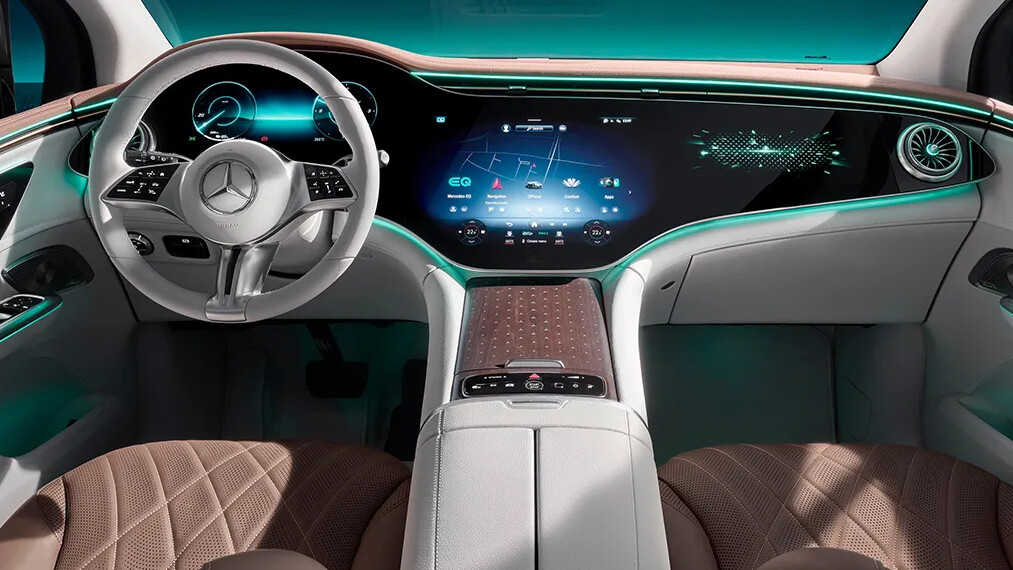The Mercedes-Benz EQE (2023): A Modern Marvel Through the Eyes of a Classic Enthusiast


Initially, the thought of reviewing an electric vehicle might seem a deviation from my usual preference for cars that carry a whiff of nostalgia. However, the EQE is not just any electric vehicle; it's a manifestation of Mercedes-Benz's illustrious history, reimagined for a sustainable future. The EQE is underpinned by the brand’s Electric Vehicle Architecture (EVA2), which is also shared with its larger sibling, the EQS. This platform is crucial as it allows the vehicle to be unencumbered by the traditional constraints of internal combustion engine designs, offering a lower center of gravity and improved aerodynamics.
From a design perspective, the EQE is a testament to the seamless blend of form and function. The exterior is sculpted with what Mercedes-Benz calls a "one-bow" design, a single arc that runs from the front to the rear, channeling the brand’s pursuit of aerodynamic efficiency. With a drag coefficient of just 0.22, the EQE is not only a head-turner but also a wind-cheater, optimizing energy consumption—a critical aspect for any electric vehicle. The absence of a traditional grille further accentuates its sleek, futuristic look, while the LED headlamps and tail lamps offer a nod to the brand's commitment to cutting-edge technology.
Underneath its striking exterior, the EQE is powered by a 90.6 kWh lithium-ion battery pack that promises a range of up to 410 miles on a single charge, although real-world conditions might vary. This battery pack feeds a rear-mounted electric motor that generates up to 288 horsepower, propelling the EQE from 0 to 60 mph in just over 6 seconds. While these numbers might not rival the raw power of a classic V8, the instantaneous torque provided by the electric motor offers a different kind of thrill—one that is smooth, silent, and yet exhilarating.
Inside, the EQE is a sanctuary of luxury and technology—a space where traditional craftsmanship meets futuristic innovation. The cabin is dominated by the MBUX Hyperscreen, a 56-inch curved glass screen that spans the entire dashboard, housing the digital instrument cluster, infotainment system, and passenger display. This screen is not just about aesthetics; it’s a testament to the intuitive, user-friendly interface that Mercedes-Benz has been perfecting over the years. The quality of materials used throughout the interior, from the soft leather seats to the meticulously crafted trims, echoes the brand's heritage of luxury.
Yet, the EQE is more than just a sum of its parts. It represents a shift in the automotive landscape—one where luxury meets sustainability without compromise. The inclusion of eco-friendly materials and sustainable production processes speaks volumes about the brand's commitment to reducing its carbon footprint, a move that resonates with the growing demand for environmentally conscious choices among consumers.
As I immerse myself in the experience of the EQE, I can’t help but reflect on the transformative journey of Mercedes-Benz. From the opulent saloons of the post-war era to the iconic gullwing doors of the 300SL, the brand has consistently been at the forefront of innovation, setting benchmarks in both design and engineering. The EQE, in my view, is an extension of this legacy—a modern classic in the making, designed for a future that respects its past.
For someone who revels in the charm of the classics, the EQE may initially seem like a step into unfamiliar territory. Still, it is precisely this willingness to embrace the new while honoring the old that makes the EQE such a compelling proposition. It's an invitation to explore the future of motoring—a future where luxury, performance, and sustainability coexist harmoniously.
In conclusion, the Mercedes-Benz EQE (2023) is more than just a car; it’s a statement. It challenges the conventions of what a luxury vehicle can be in the electric age. And while it may not have the roar of a classic engine or the tactile feedback of a manual gearbox, it offers something equally profound: a quiet revolution, paving the way for a new era of automotive excellence.
As a classic car lover, the 2023 Mercedes-Benz EQE presents a fascinating conundrum. It embodies a new era of luxury that transcends the traditional allure of a throaty V8 or the tactile feedback of a manual gearbox. This car is not just about getting from point A to B; it's about redefining what luxury means in a world that's increasingly conscious of its environmental footprint. The EQE is a testament to Mercedes-Benz's ability to evolve while respecting its storied past, offering a silent symphony of technology and style that even the most ardent classic enthusiast can't ignore. While it may not have the visceral appeal of a vintage Gullwing, it commands respect in its own right, standing as a modern classic in the making. The EQE challenges us to broaden our definition of what constitutes a collector's item in this new era of motoring.
Specifications
| Specification | Value |
|---|---|
| Battery capacity | 90.6 kWh |
| Range | Up to 410 miles |
| Horsepower | 288 |
| 0 to 60 mph | Just over 6 seconds |
| Drag coefficient | 0.22 |